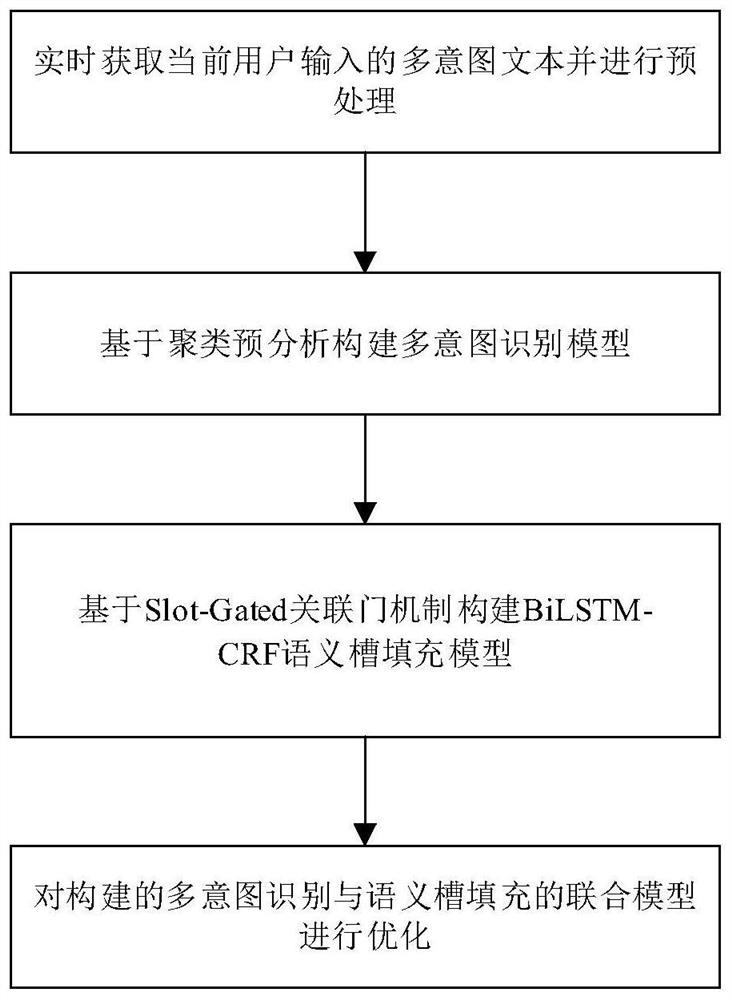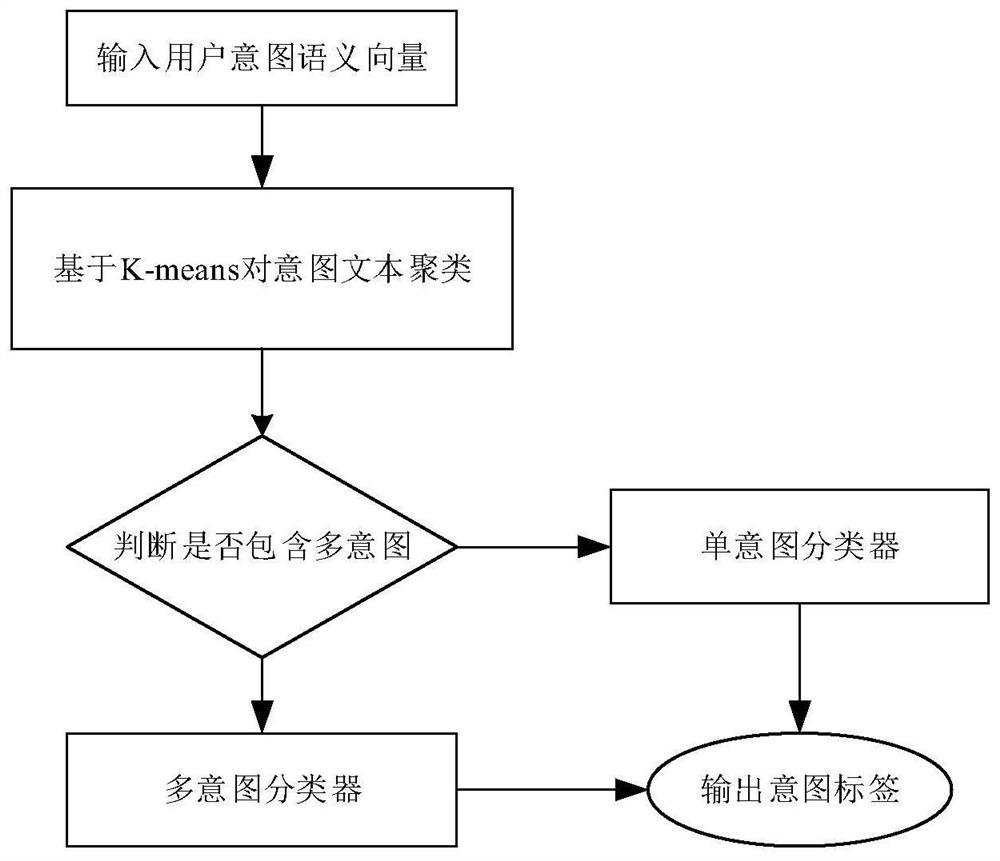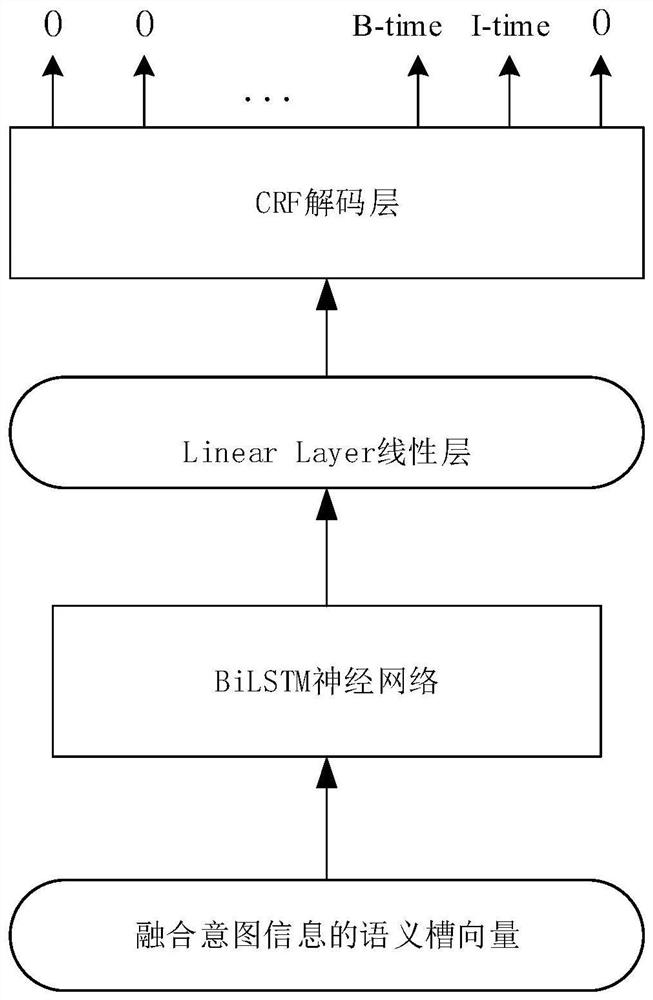A clustering pre-analysis-based multi-intention recognition and semantic slot filling combined modeling method
A recognition method and pre-analysis technology, applied in semantic analysis, neural learning methods, character and pattern recognition, etc., can solve the problem of higher level of semantic understanding, semantic information has not been effectively used, and the two aspects have not been fully considered. Task contact and other issues
- Summary
- Abstract
- Description
- Claims
- Application Information
AI Technical Summary
Problems solved by technology
Method used
Image
Examples
Embodiment Construction
[0051] Such as figure 1 As shown, the present invention discloses a multi-intent and semantic slot joint recognition method based on clustering pre-analysis, including the following steps:
[0052] Step S101, obtaining the multi-intent text input by the current user in real time and performing preprocessing;
[0053] To preprocess the multi-intent text input by the current user is to vectorize the multi-intent text so that it can be input into the neural network model for semantic feature extraction. The vectorized representation method in this paper is to first use the massive Chinese unsupervised corpus in the same field to train the BERT model. Then, the obtained BERT pre-trained model is used to vectorize the multi-intent text.
[0054] Step S102, constructing a multi-intent recognition model based on clustering pre-analysis to identify multiple intentions of the user; figure 2 shown.
[0055] The purpose of building a multi-intent recognition model based on clusterin...
PUM
 Login to View More
Login to View More Abstract
Description
Claims
Application Information
 Login to View More
Login to View More - R&D
- Intellectual Property
- Life Sciences
- Materials
- Tech Scout
- Unparalleled Data Quality
- Higher Quality Content
- 60% Fewer Hallucinations
Browse by: Latest US Patents, China's latest patents, Technical Efficacy Thesaurus, Application Domain, Technology Topic, Popular Technical Reports.
© 2025 PatSnap. All rights reserved.Legal|Privacy policy|Modern Slavery Act Transparency Statement|Sitemap|About US| Contact US: help@patsnap.com



